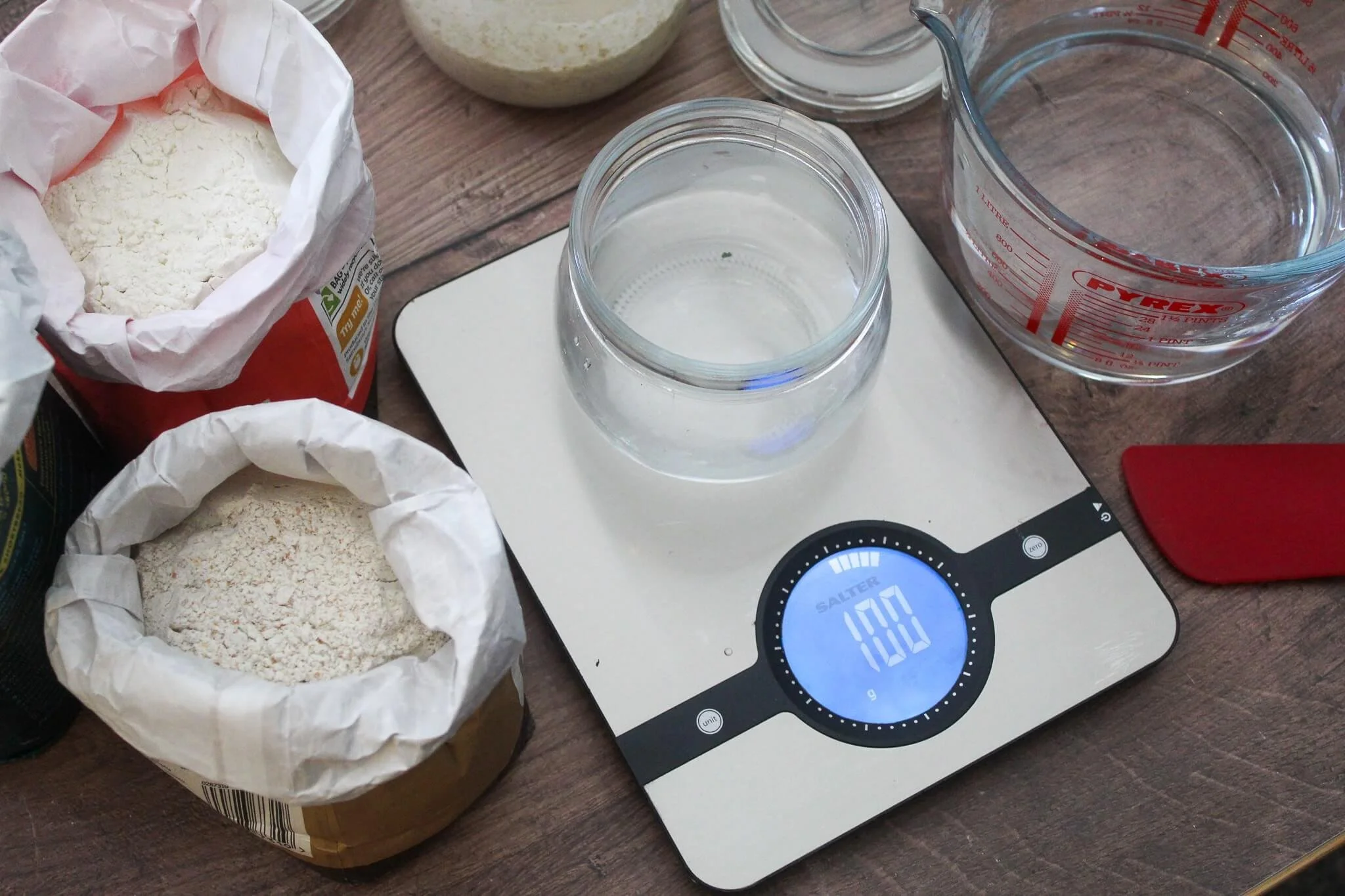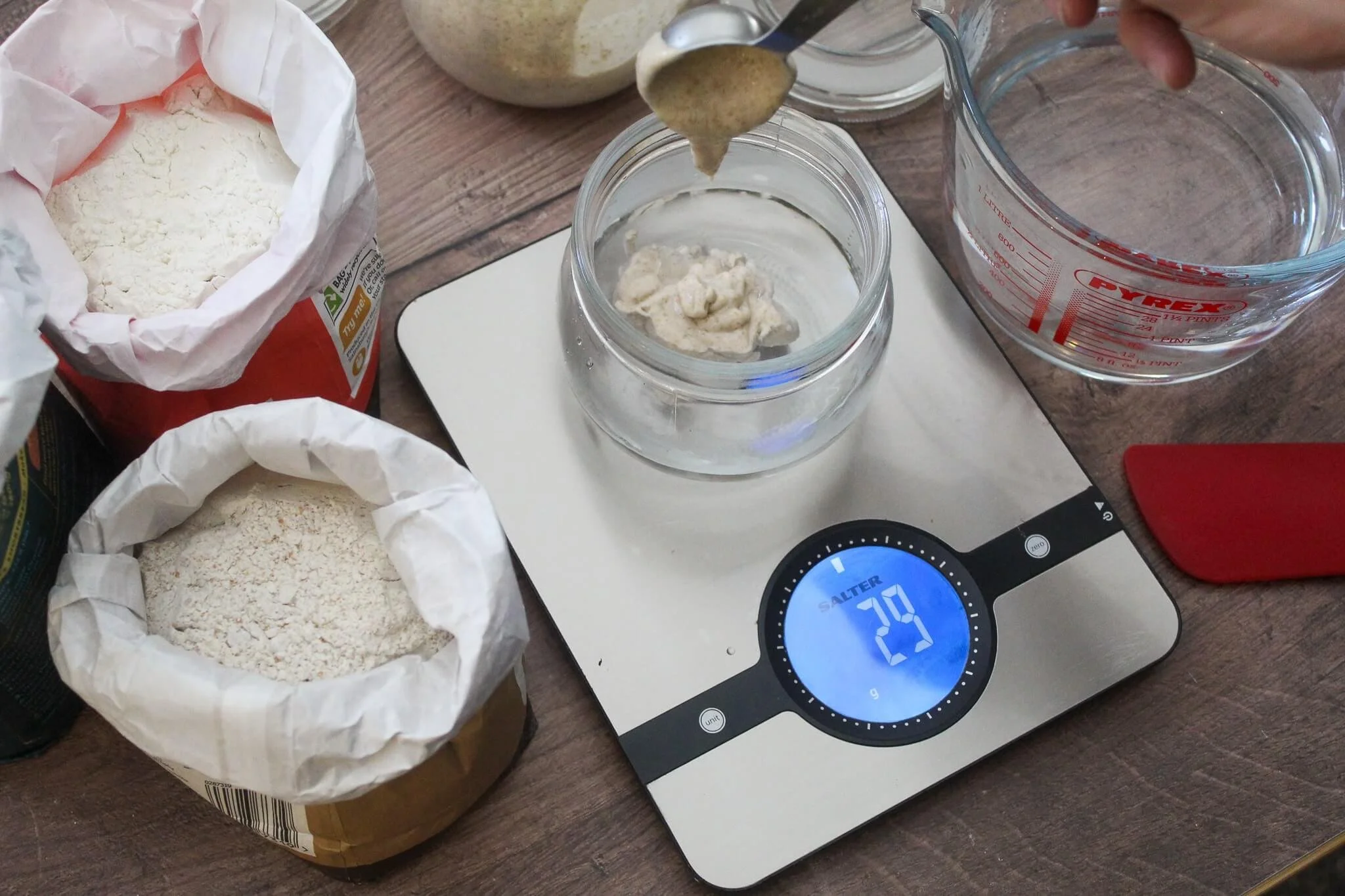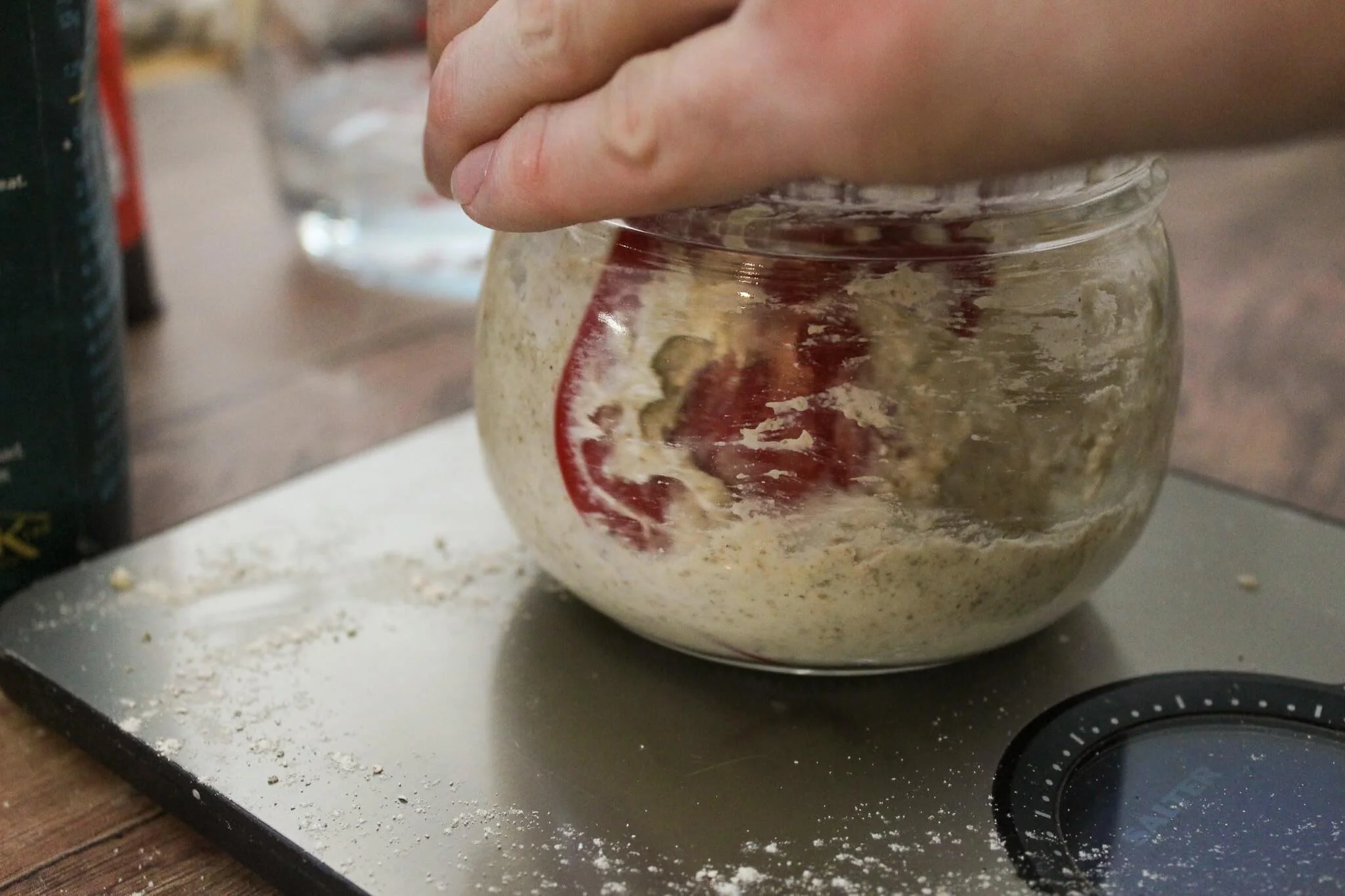Everything You’ll Ever Need to Know About Sourdough Starter
Discover > Texas Home Cooking > Everything You’ll Ever Need to Know About Sourdough Starter
Bread (how long does bread last?) making has relied on the leavening of wild yeast (cultured in a sourdough starter) for most of human history. The use of bakers yeast is a relatively new invention dating back around 150 years ago. In the middle ages, starters began to be replaced by barm, the foam collected from the top of fermenting beer. These days sourdough is more artisan as generic, white sandwich bread became the household standard.
What is a Sourdough Starter?
Sourdough starter is the leavening agent used in sourdough bread. It's made with a simple mixture of equal parts flour (how long does flour last?) and water, mixed together, and left in a warm place to support wild yeast and cultivation. Wild yeast microbes are present in all flours and need an ideal environment with warmth and plenty of moisture to successfully multiply.
How does a Sourdough Starter Work?
Sourdough works by using a flour and water medium to cultivate wild yeast species present in flour and in the air. Given the ideal conditions (adequate temperature and water), yeast cells can multiply as fast as once every 90 minutes. Starches are complex carbohydrates that are made up of many different sugar molecules like maltose, glucose, and fructose. Yeast metabolizes these simple sugar molecules (maltose most effectively) and excretes carbon dioxide and alcohol as a result. The sour flavor comes from lactic and acetic acid produced by bacteria activated by the process.
Yeast can't break down complex starches into the simple sugar molecules it can consume. It utilizes the alpha and beta-amylase enzymes in the flour as a catalyst to break these starch molecules down. Alpha-amylase breaks these long-chained starches into shorter chains while beta-amylase breaks maltose units off the ends of the starch chains. Yeast cells can then metabolize these sugar molecules and ferment.
How to Make a Sourdough Starter
Equipment
All you'll need to make a starter is 2 glass jars, a rubber jar spatula for transferring and mixing, and a weighing scale. The weighing scale is the most important piece of equipment. Accuracy is key when it comes to baking and sourdough is no exception. A good digital scale will set you back less than $20 and is well worth it if you're in the kitchen a lot.
I always recommend you use glass jars primarily because it's more sanitary and doesn't carry any odors like plastic or other materials. A small difference of residue in your jar can cause your starter to go bad. Using a jar with a wide mouth also helps with mixing and transferring the mother starter. My favorite jars to use for starters are mold jars because they don't have sealed lids, come in some great sizes, and have an even, wide shape. You'll want at least 2 jars as you'll be transferring a small piece of the starter to a different jar every day to feed it.
A rubber spatula is important because that flexibility will be your best friend for a clean jar. Why is a clean jar important? So you can track how your starter moves. As your starter becomes more active it will rise doubling and tripling in size before coming back down past its peak time. To track the rise and fall of your starter you have to keep the side of the jar clean so you can monitor the steaks it leaves as it falls.
Ingredients
Starter only contains 2 ingredients: flour and water. Filtered water is recommended when making a starter but as long as your tap water is drinkable you can use that. The type of flour you use has a little more impact.
Choice of Flour
The more protein flour has, the more it will cause the starter to rise and fall. The main flour bakers tend to use for starters are all-purpose flour, bread flour (how long does bread flour last?), whole wheat flour (how long does whole wheat flour last?), rye flour, or a blend of flours. My favorite combination is a 50/50 mix of unbleached bread flour, and rye flour. The flour or blend you use is totally up to you and it'll probably take you a while to get familiar with which you prefer. The only thing I will say that you should avoid is bleached flour. Bleaching flour diminishes microbes and nutrients making it immune to that sweet fermentation we're looking for.
How to Start a Sourdough Starter
To start your sourdough starter first you'll have to get your scale. If you have a digital scale you'll most likely have a tare option to zero out the count. If you're using a manual scale, get a digital one. If your scale does not have a tare option you'll have to measure out the weight of the jar (without the lid) and record that so you can precisely measure out ingredient through this equation:
Starter weight + weight of the jar = how much your jar should weigh with the starter
Example: 50g of starter + 380g (weight of a 23 Oz mason jar) = 430g
Let's assume your scale has a tare option (because they all do), place your lidless jar onto the scale, zero it out then add 100 grams of filtered water heated to 80°F. Zero out the scale once again then add 100 grams of flour (or the appropriate ratio of what you're using, in my case 50g of rye and 50g of bread flour). Give the starter a good mix with the rubber spatula, scrape down the edges, then place the lid onto the jar and leave it in a place with a consistent temperature.
Feeding Ratios
To find a feeding ratio right for use, use the bakers 'X:Y:Z' reference where X=the amount of starter, Y=the amount of flour, and Z=the amount of flour. There's a large range of ratios bakers use anywhere from 1:1:1 to 1:10:10. The higher the ratio the more energy you are providing to your starter and the more you are diluting your microbes. The more you dilute your microbes the less active the starter will be. I use a ratio of 1:2:2, as a reference that 50 grams of my mother starter, 100 grams of flour, and 100 grams of warm water.
How to Feed a Starter
Feeding a starter is a daily task if you want it to stay alive. It doesn't take long or make a lot of mess just around 5 minutes at a time of day that is convenient for you. Be as consistent as you can with your feeding times to avoid breaking the schedule. Feed your starter when it's at its peak: the maximum height it will reach in its container.
You can measure your starter's peak by wrapping a rubber band around the jar where the starter sits than watching to see when it's doubled or tripled in height. Feed your starter at least every 24 hours. More active starters will require you to feed every 12 or even 6 hours.
To feed the starter place a clean, empty jar onto your weighing scale. Tare it, then add 100 grams of warm, filtered water.
Tare the scale again then take your fermented starter and dilute 50 grams of the stuff into the warm water.
Stir the starter into the water then spoon in 100 grams of the flour you're using.
Give that a good stir with your rubber spatula, scrape down the sides, then place the lid back onto it. Place the starter into its designated spot and leave until the next feeding.
How to Store a Sourdough Starter in the Fridge
When you first start culturing a starter it's young is sensitive to things like schedule, temperature, and contamination. The first two weeks are essential because they'll determine whether or not your starter will make it to maturity. Once you've consistently refreshed the starter and kept it in ideal conditions for two weeks you can adjust feeding to your life schedule.
A mature starter can move into the fridge and survive there comfortably for up to 2 months without feeding (although it's definitely not recommended). You can store and keep a thriving starter in the fridge (as long as it's at least a couple of weeks old ) and just feed it once a week using 50 grams of starter, 100 grams of water, and 100 grams of flour.
How to Use Excess Starter
A sourdough starter makes a delicious ingredient to much more than just bread and can be used for much more than just a food ingredient.
Cooking
Aside from bread, a starter can be used for a lot of other leavened baked goods and a ton of other foods. Battered and fried foods (What wine goes well with fried foods?), dumplings, sauce thickeners, and a lot more. Sourdough starter can also be dried in the oven then broken apart and stored for later use.
Recipes
There are countless recipes where you can use a sourdough starter to leaven or boost the flavor of a recipe. These three are common and easy recipes where the starter really lends its leavening power and delicious flavor.
Sourdough Pancakes
You can make pancakes with a twist by adding a couple of tablespoons of starter to your pancake batter. Mix in 2 tablespoons of starter for every cup of flour for a mild sourdough flavor.
Cinnamon Rolls
You can use a starter to leaven cinnamon rolls and a number of other sweet, leavened cakes. Use this cinnamon roll recipe and instead of adding dried yeast, add a tablespoon of your starter excess.
Sourdough Batter
Add a couple of tablespoons to deep-fry batter for perfect tangy fried fish.
Compost
Starter is a great addition to a compost pile by adding additional microbes and nutrients. Simply pour the starter onto your compost bucket or pile and you'll be good to go.
Skincare
Sourdough starters are rich in lactic acid bacteria which is super good for the skin. Adding it to a mixture of yogurt or honey or some avocado can do your skin some real good.
Pass it Down
You can pass your starter discard down to someone who wants to start culturing yeast themselves. A starter that is already a few days or weeks old will adapt nicely to a different feeding schedule.
Freeze it
Starter can stay good in the freezer for up to a year if you package and store it properly. Divide the sourdough into smaller portions, place it into an airtight container, and freeze it in those portions. You can use a number of different types of molds for this.
Ideal Environment for Culturing Yeast
Culturing yeast successfully is mostly about temperature. Yeast thrives in temperatures between 70°F and 80°F and dies at 140°F. Just like consistent feeding is important for a healthy starter consistent temperature is even more important. To keep temp as consistent as possible keep your starter in the same place such as in a high cupboard in your kitchen. The warmth of your kitchen will also assist the culture in growing.
How to Tell If Your Starter is Alive
There are a lot of confusing signals a starter can show you and important to know them to make sure you don't waste any ingredients, effort, or time. A healthy starter that is adequately fed has a clean, yeast smell, and a bubbly surface. The first and possibly most common issue I've heard is that people expect too much from their starter too soon. Unless you have ideal temperatures in your kitchen for yeast cultivation you likely won't see much action for the first or second feeding. Make sure your designated starter spot is at least 70°F.
Starters have a tendency to slow down after that first week of constant feeding. If you see little to no bubbles in your starter after you've been feeding and storing it right don't worry, just keep feeding it and you'll see activity come back in a few days.
A grey, alcoholic liquid that yeast excretes, known as hooch, is a sign of a hungry starter in need of feeding. Just pour the hooch away, dilute 25 grams of the starter in 100 grams of warm water, and mix in 100 grams of flour. Store it in a warm place for 12-24 hours then repeat.
How to Tell if your Starter has Gone Bad
You can determine if your starter is bad through color and smell. Grey, orange, or pink discoloration means your starter has likely been contaminated and can no longer be used. Other microbes and any number of unwanted ingredients can harm your starter (salt for example kills yeast).
A good starter smells like clean, unbaked bread. Smell a block of cake yeast or the inside of a jar of dried yeast to get a reference of what the stuff smells like. You should get a slightly yeasty, sweet, alcohol scent never anything foul, over-acidic, or decaying.






